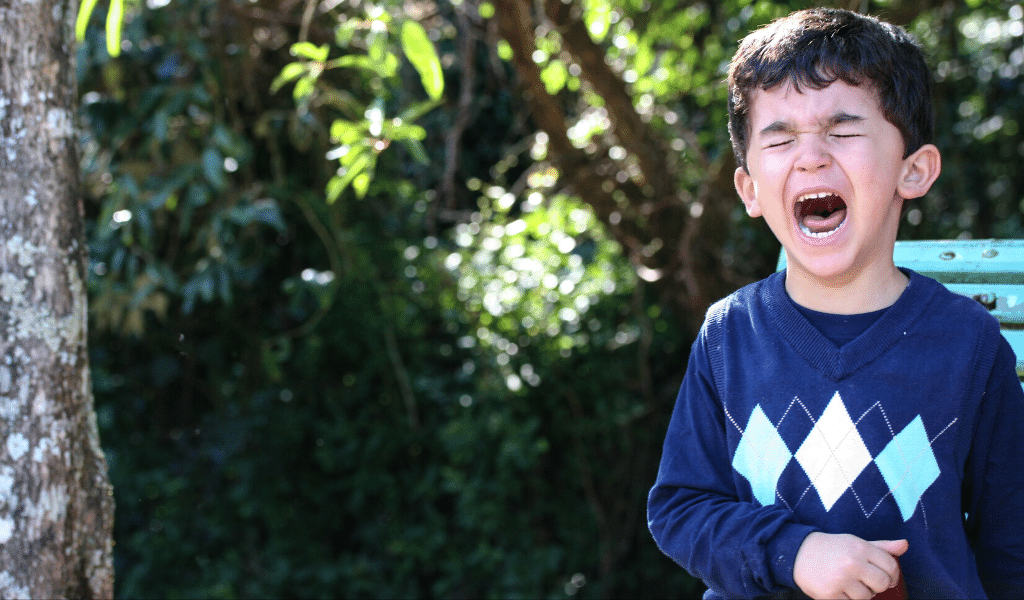“When we see a behaviour that is problematic or confusing, the first question we ask shouldn’t be ‘how do we get rid of this behaviour?’ but rather, “what is this telling us about the behaviour?’” (Delahooke, 2019)
On this blog post, behaviour and SEND specialist Kerry Payne explores strategies early years professionals can use to support challenging behaviour. If you missed our behaviour webinar where Kerry shares more in-depth advice, you can access the recording here.
As early years practitioners, it is likely that we will observe and support many different behaviours. In most cases, the behaviours are developmentally expected, for example hitting out when tired. Because we expect this as part of child development and have experience of dealing with common behaviours, we are often more confident in supporting a child because we have tried and tested strategies to use. There are, however, behaviours that can make us feel de-skilled, frustrated and lacking in confidence. This is particularly the case when the behaviour is reoccurring.
You will often hear that behaviour is a form of communication, but unfortunately, reoccurring and challenging behaviour rarely tells us clearly what the child needs, what the child is feeling or what the child wants. We, as practitioners, have to become investigators looking for clues or indicators whilst ensuring emotional and physical safety. This process can take time, but once we identify the trigger, we can develop a responsive and supportive approach.

When we feel unsure why a behaviour is occurring, it is important to tune-in to the triggers. This can often take time, patience and curiosity. Many educators use the ABC approach which helps us to monitor and identify the “why” of behaviour. Below is an outline of this approach with a few extra letters…

Let’s have a look in a bit more detail:
A – Antecedent
If you are to identify a trigger, you have to consider the full context, so if, for example, you have a child who is biting daily, you will need to look for the antecedent which essentially means: what happened before the behaviour occurred?
You might highlight the routine, group size, type of play or transition. For example, you may find that biting happens every day when getting ready for lunchtime or happens during free play when there are lots of children around.

B – Behaviour
The effectiveness of an ABC-DE chart is reliant on the practitioner focusing on one behaviour. If you try to document every type of behaviour, finding the trigger becomes like finding a needle in a haystack. Another risk of focusing on lots of different behaviours is that we begin to see the child as ‘all-round’ naughty, when it may be that those behaviours are simply a domino effect of communication.
Choose the dominant behaviour and the one you find most challenging. It is likely that this focus will lead to you identifying the trigger more quickly. Once you identify the trigger for one behaviour, and choose a strategy, it usually supports a range of behaviours.

C – Consequence
When we hear the word consequence, we don’t mean discipline or punishment. Remember, we are trying to understand the behaviour, not simply trying to get rid of it. The consequence essentially means how the child reacts or what events immediately followed. For example, a child may bite and then become very upset or teary-eyed or a child may run off to hide to play with the toys they have snatched.
With this information, we can investigate whether the child who bites doesn’t know how to let others know he is stressed or the child who snatches toys is actually unsure how to ask to take-turns.
D – Dealt
Now for the newly introduced letters…who dealt with the behaviour? There are a few reasons why this is important. First, we all have our own “flashpoints” with behaviour. Biting, for example, may trigger one practitioners’ anger or frustration making it harder to support calmly and appropriately. It is absolutely okay to admit if you find a particular behaviour difficult to deal with, and in these moments, you may seek support from colleagues or make it part of your professional development to learn more about the behaviour.

Second, research tells us consistently that children need to have secure attachments and trust with their key people. Imagine if you were upset or angry, it is likely you would feel most supported with a loved one or a familiar face. It is the same with children, they need consistency where possible.
E – Effective Strategy?
This is often the part of the chart where it becomes apparent that developing consistency across a team or even as an individual can actually be really hard to achieve. Our moods fluctuate, and so one day, we may be really consistent with a strategy and the next day, we may lose our way. This is okay, and we are always only aiming for ‘good enough’ in consistency. We won’t have perfect strategies all day, every day. To give context, however, this is one example of a behaviour chart I reviewed:
As you can see from the above, this would only create confusion for a child and on some occasions, he gets a hug so ‘behaviour bingo’ can a good outcome. When we are reactive, we jump through different strategies. When we are responsive, we stick with a strategy ensuring it has had time to work.
Give it time
Once you have completed all the sections of the chart, you should consider as a whole team what the best and most consistent response may be, how long it will be applied for and a clear date for review. It is common for practitioners to want a ‘quick fix’ or a week turn-around but remember that behaviours are often habits, and it can take time to unlearn a behaviour.

About Kerry
Kerry is an experienced consultant and trainer for Early Years Education and NASEN, with specialist knowledge in social and emotional behaviours and SEND. Her early career was spent in nurseries and schools working as an early years teacher and manager. She has a MSc in Applied Psychology and is working towards her PhD in Early Education and Developmental Delay.